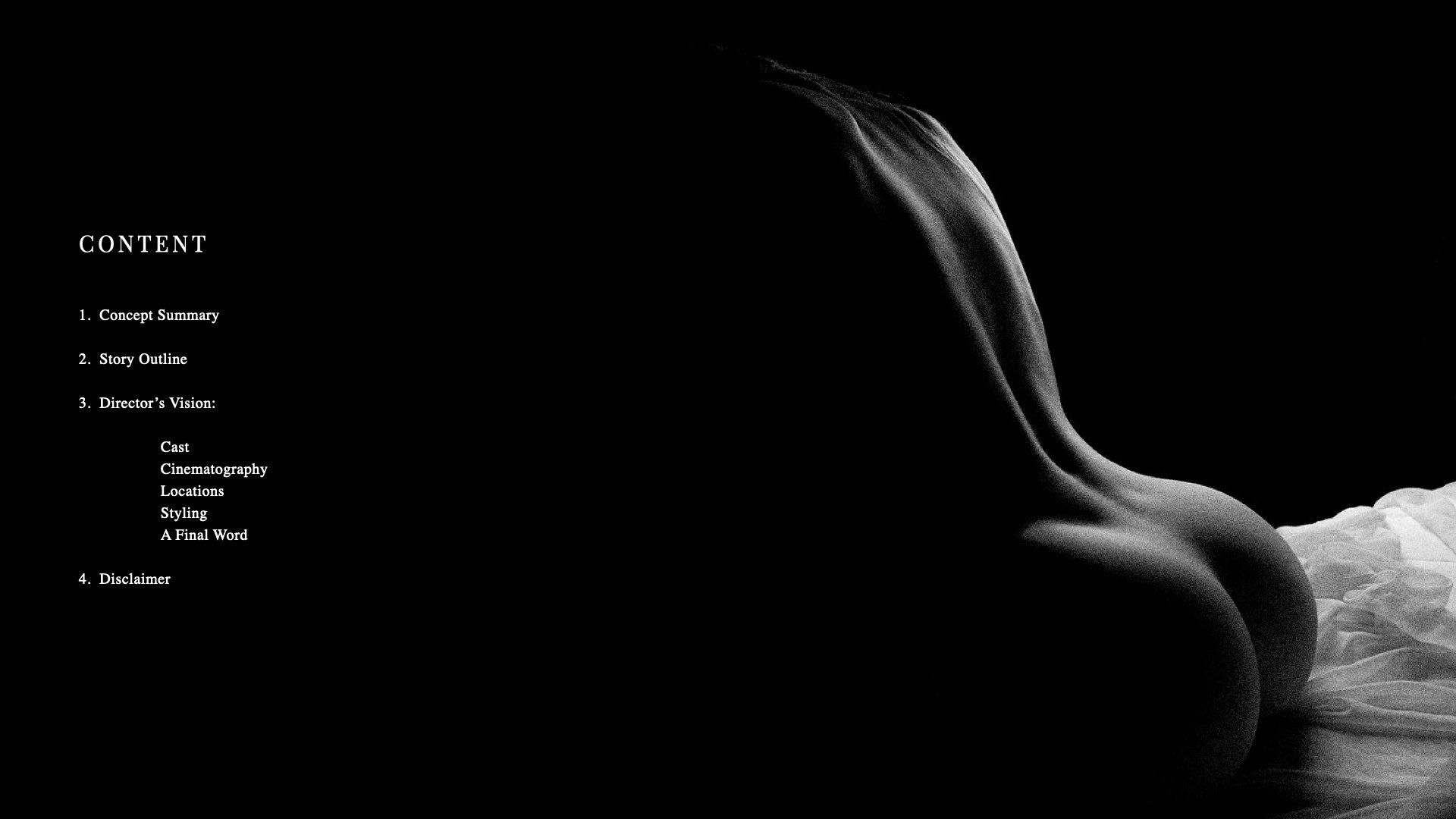From Concept to Screen: A Short Film Treatment Example That Got Funded
Have you ever wondered how a single document could turn your dream project into a cinematic reality? The secret? A compelling short film treatment.
Picture this: you've got an incredible short film idea that feels ready to leap off the page and onto the screen. But how do you share that vision in a way that attracts funding, catches a production company's attention, or gets a nod from potential collaborators?
The answer lies in the powerful, often overlooked tool of film treatments.
In this blog, I'm excited to share a short film treatment example that was my game-changer, securing funding for a project that was once just a flicker of imagination.
Through this example, we'll explore the essential elements of a successful treatment, uncover the key to writing in a clear, concise, and engaging manner, and demonstrate how a well-crafted treatment can be your ticket to turning your short film's story from a concept to a compelling visual narrative ready for production.
Crafting the Vision of "Ius Talionis": A Strategic Breakdown of Its Treatment
The treatment of "Ius Talionis" serves as a narrative guide and a strategic tool to sell a compelling vision to producers.
Each chapter is designed to build interest, showcase potential, and ensure the project's cinematic qualities are fully realized.
Here's how each section contributes to selling the idea and bringing the vision to life:
Crafting Intrigue with the Concept Summary
Right from the outset, the Concept Summary hooks readers with its intriguing premise: a sensual evening that veers into the unexpected, set amidst the world of the elite.
This initial tease opens the door, piquing the interest of producers by promising a narrative filled with twists and depth, crucial for demonstrating the film's unique selling points.
Engaging Through Story Outline
The Story Outline unfolds the narrative with a keen focus on atmosphere and tension, skillfully narrated through visual and auditory descriptions.
This part of the treatment vividly paints the scenes, from the suspenseful buildup of a thunderstorm to the villa's luxurious yet minimalist setting, effectively showcasing the film's potential for rich visual storytelling.
By detailing the plot and its key moments vividly and engagingly, this section works hard to ensure readers can visualize the finished film in their minds, an essential step in convincing producers of the project's viability.
Vision Comes to Life in the Director's Vision
Perhaps the most crucial for selling the idea to producers, the Director's Vision chapters lay out the film's aesthetic, thematic, and emotional landscape.
Here, the treatment goes in-depth into cast choices, cinematography styles, location aesthetics, and styling—each element was carefully chosen to enhance the storytelling.
This detailed blueprint demonstrates a clear and executable vision and filmmaking process and showcases how each cinematic element contributes to the overall experience. It reassures producers and executives of the project's coherence and the director's competence.
Conclusion
In Summary, the treatment of "Ius Talionis" exemplifies strategic storytelling at its finest. Each section, from the enticing Concept Summary to the richly detailed Director's Vision, works in concert to sell the film's unique story and aesthetic vision.
By carefully delineating the narrative structure, character arcs, visual style, and thematic depth, the treatment presents a compelling case to producers.
It illustrates the film's potential for success and its readiness for production.
Through this meticulous breakdown, the film script treatment transforms from a simple document into a persuasive pitch, effectively bringing the film's vision to life in the minds of those who can make it a reality.
Film Pitch Deck Templates
In the world of filmmaking, time is as precious as your creative vision. Understanding this, alongside the insider knowledge shared in this blog, I'm thrilled to introduce two game-changing film pitch deck templates designed to accelerate your pitch process.
These templates are your ultimate shortcut. They eliminate the daunting task of designing from scratch and allow you to focus on what truly matters—selling your idea.
Crafted with filmmakers in mind, each template is structured to highlight your project's most sellable aspects, from compelling story arcs to unique visual styles.
Whether aiming to captivate potential investors or blow away production companies, these pitch deck templates are your key to making a memorable impression fast.
Frequently Asked Questions About Short Film Treatments (FAQs)
What is a short film treatment?
A short film treatment is a written document that concisely and engagingly describes the story and key elements.
It's like a blueprint for your film, focusing on the key plot points, characters, and visual style of your film project without the intricate details of a full screenplay.
Why do writers and directors write treatments?
Treatments serve several purposes:
Clarifying Vision: They help filmmakers and writers crystallize their creative vision.
Pitching: They are essential for pitching to producers, investors, and production companies.
Guidance: They provide a roadmap for the development process of the screenplay or film project.
What are the key elements of a compelling film treatment?
The essentials include:
Story Idea: A clear and engaging presentation of your main narrative.
Plot Points: The crucial plot points that drive the story forward.
Main Characters: Brief but vivid character descriptions, including their motivations and arcs.
Visual Style: A glimpse into the film's visual and emotional mood.
What's the difference between a treatment and a screenplay?
A movie treatment is a narrative document without dialogues, often written in prose. It outlines the story, essential elements, and visual style.
A screenplay is a detailed script including dialogues, scene descriptions, and technical instructions for production.
How should I describe the film's characters in the treatment?
In your treatment, provide concise yet vivid descriptions of your main characters. Focus on their personalities, motivations, and how they change throughout the story.
The descriptions don't need to be long; a few sentences for each character should capture their essence.
What role does the setting play in a treatment?
The setting is more than just a backdrop; it can influence the mood, tone, and characters' choices.
Briefly describe the key locations to give a sense of the story's world. Whether it's a bustling city or a quiet village, make the setting come alive as part of your narrative.
Can you include visual elements in a treatment?
Yes, incorporating visual elements or specific shot examples can be highly effective. While the treatment is mainly prose, adding descriptions of key visuals can help convey the style and atmosphere of your film.
Just remember to keep writing it brief and relevant to the story.
How do I ensure my treatment is both clear and concise?
To achieve clarity and conciseness:
Focus on the Main Story: Stick to the essential plot points and character arcs.
Avoid Jargon: Use simple, accessible language.
Be Precise: Each sentence should serve a purpose, either advancing the story or deepening understanding of the characters and setting.
What makes a treatment compelling?
A compelling treatment grabs the reader's attention from the start. It:
Creates Emotional Engagement: Makes the reader care about the characters and what happens to them.
Builds Suspense or Intrigue: Tease key plot twists or conflicts without giving everything away.
Shows Originality: Presents a fresh perspective or a unique take on a familiar theme or genre.
How do I convey the film's themes in the treatment?
Weave the themes into the narrative description without stating them explicitly. Show how the themes emerge through the characters' journeys, the conflicts they face, and the resolutions they reach.
Your treatment should reflect the more profound message or questions your film explores.
Should I mention potential music or soundtracks in my treatment?
While not necessary, mentioning music can sometimes enhance the mood you're aiming to convey. If a particular style of music or a specific song plays a crucial or interesting role in setting the tone or advancing the story, it can be worth including.
Be brief and focus on its relevance to the narrative.
How do you address the film's intended audience in the treatment?
Identify your target audience and explain why this story will resonate with them. You might highlight themes, characters, or settings that speak to specific demographics.
Understanding your audience is vital in crafting a treatment and script that appeals to potential investors and production companies.
Can treatments be used for genres other than short films, like TV shows or web series?
Absolutely! Treatments are versatile tools used across different mediums, including TV shows, web series, and video games.
The principles remain the same: concise, compelling storytelling that outlines the critical elements of your project.




























































